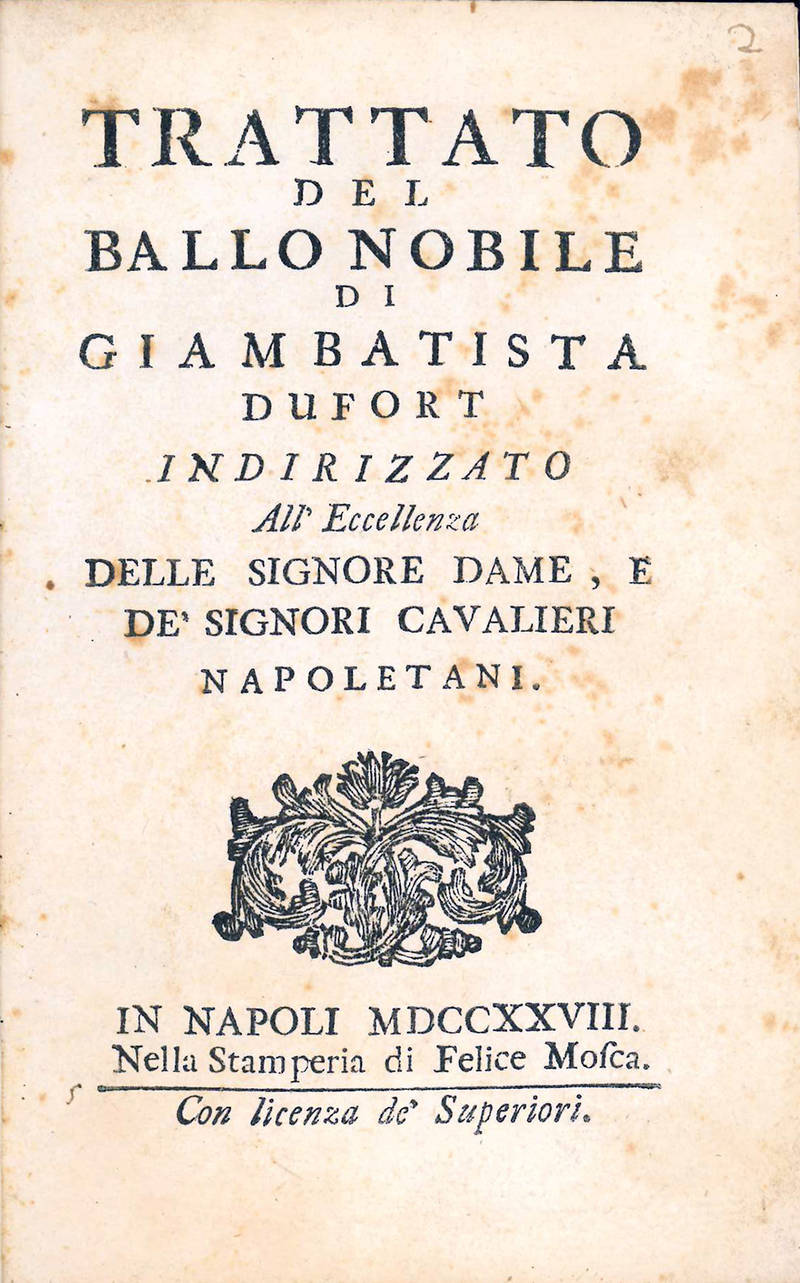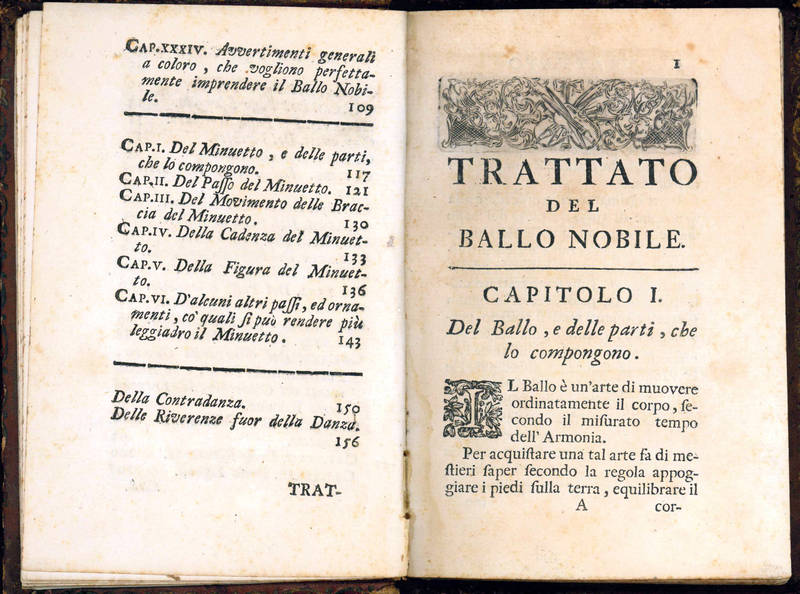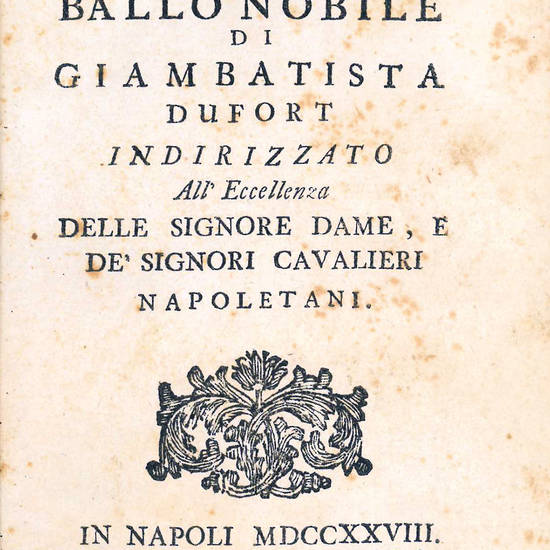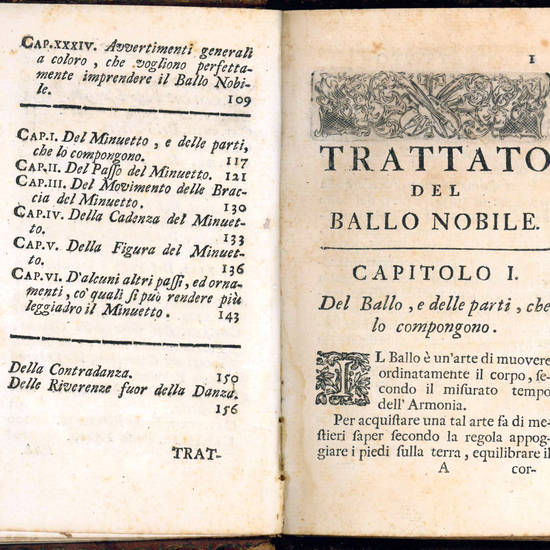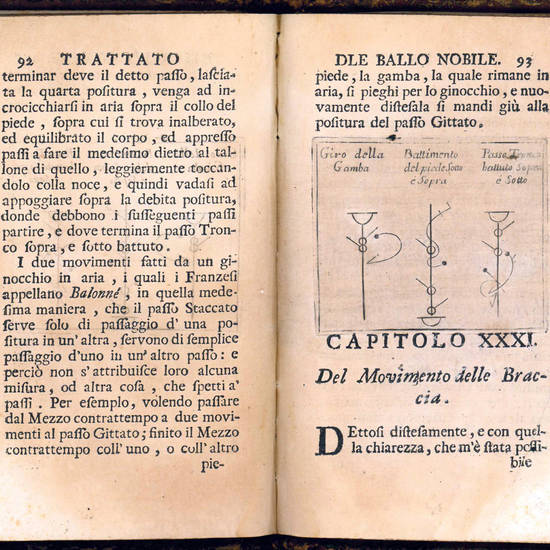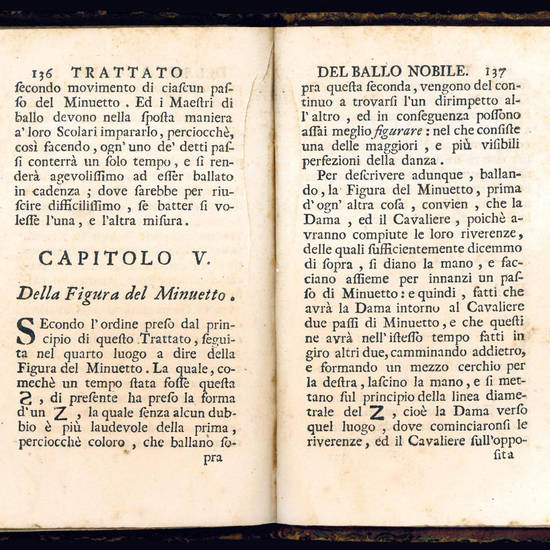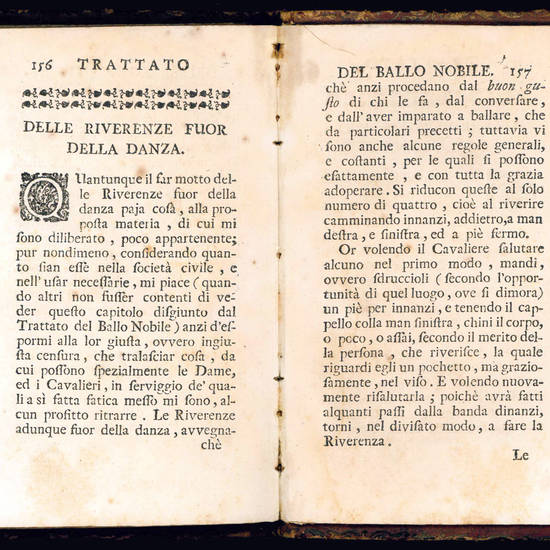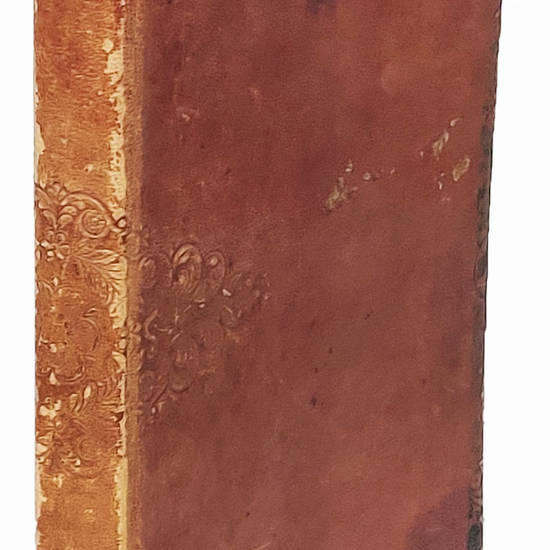“AN IMPORTANT BOOK ON THE DANCE OF THE TIME” (F. DERRA DE MORODA)
8vo (161x105 mm). (24), 160 pp. Woodcut ornament on title page. Engraved headpiece on p. 1 and 25 engraved illustrations in the text. Later blind-tooled calf, sprinkled edges (worn, rubbed and slightly stained). Some marginal foxing, slightly uniformly browned, all in all a good copy.
First edition of this important treatise on choreography, the first to introduce in Italy Raoul-Auger Feuillet's system of shorthand dance notation (which was first described in 1700 in his Chorégraphie, ou l'art d'écrire la danse), here skillfully reproduced in the numerous engraved diagrams that accompany the text.
The first part of the work deals with the general theory of the “noble dance”, and consists of thirty-four chapters devoted to instructions for steps required in Italian Baroque dance including pirola (pirouette), sfuggito (echappé), passo unito (assemblé), and cadente (tombé). Each step is fully described and notated in Feuillet notation. The second part contains six chapters devoted to performance of the minuetto (minuet) and concludes with a section on the ‘contraddanza' (or contradance or countrydance) and riverenze (bows). The work thus deals mainly with ballroom dance and only marginally with theater dance. In the preface, the author recalls the Italian origins of measured dance, referring to authors such as Rinaldo Rigoni and Fabrizio Caroso, but also stresses the importance of the improvements later introduced by the French masters Pierre Beauchamps and Guillaume-Louis Pécour (cf. B. Sparti, Giambattista Dufort and la Danse Noble - Italian Style, in: “Proceedings of the Eleventh Annual Conference of the Society of Dance History Scholars”, Riverside, University of California, 1988, pp. 216-232).
“An important book on the dance of the time, giving the names of the steps in French and Italian, and very good descriptions” (F. Derra de Moroda, The dance library. A catalogue, München, 1982, no. 833).
Jean-Baptist Dufort was a French dance master. After several performances at the Opéra, such as the one in 1697 in L'Europe galante (music by André Campra and choreography by Louis Pécour), he moved to Parma where he worked as ballet master at the Ducal Collegio de' Nobili. Subsequently, he moved to Naples and spent several years there, helping to spread French dance and its terminology of steps and movements to the Neapolitan court (cf. J.-N. Laurenti, Dufort, Giambattista, in: “Dictionnaire de la danse”, Paris, Larousse, 2008, p. 138; and Enciclopedia dello Spettacolo, Rome, 1975, IV, col. 1073).
Italian Union Catalogue, IT\ICCU\MILE\035362; P.D. Magriel, A Bibliography of Dancing, New York, 1936, p. 97; Four Hundred Years of Dance Notation, New York, The Grolier Club, 1986, no. 27; RISM, B/VI, 282.
[11919]

